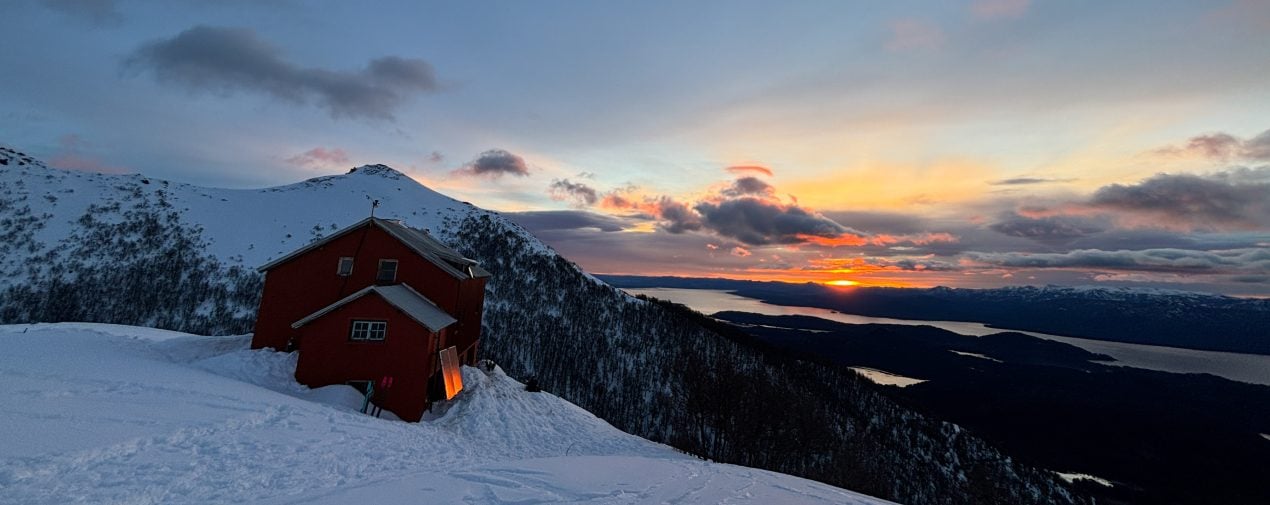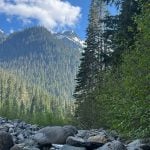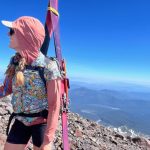How to Plan a Backcountry Hut Trip
Feather-light Teton snow falls gently on the white yurt, enveloping it in a soft white blanket. It’s day four of our hut trip to Commissary Ridge Yurt, and the snow hasn’t stopped refreshing our little backyard hill—perfect for hippie turns in touchy avalanche conditions. The yurt’s woodstove crackles, melting snow into hot water for morning coffee. In the low February light, we ski full days of human-powered powder laps and munch on quesadillas in a warm yurt filled with our closest friends. Sound appealing? Read on to learn about how to plan your own backcountry hut trip next winter.
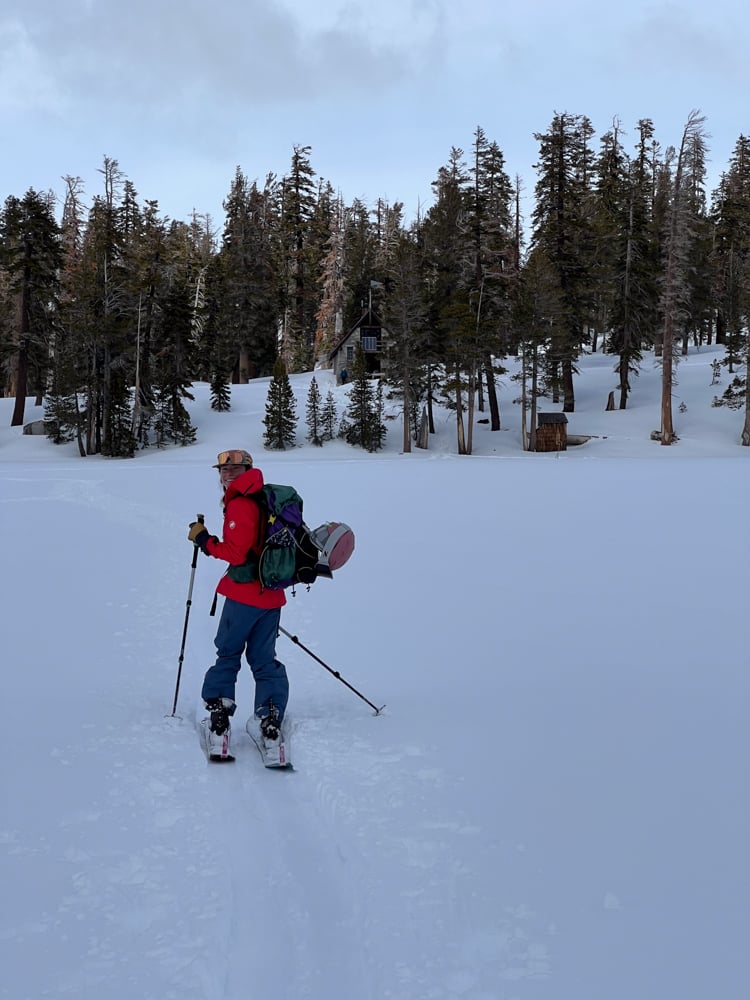
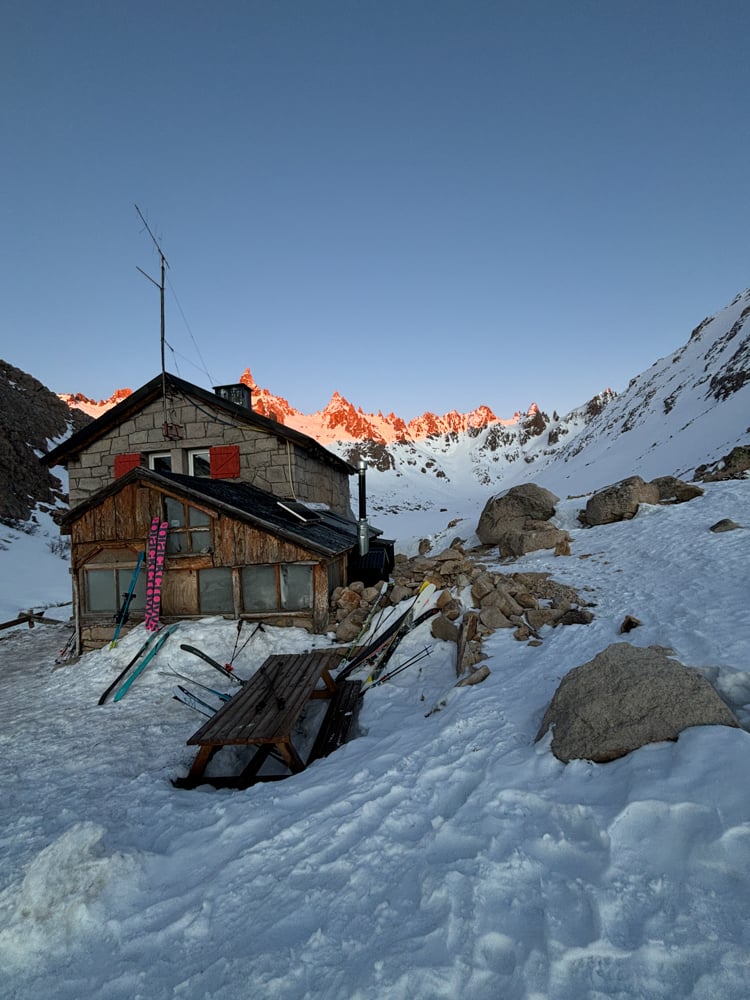
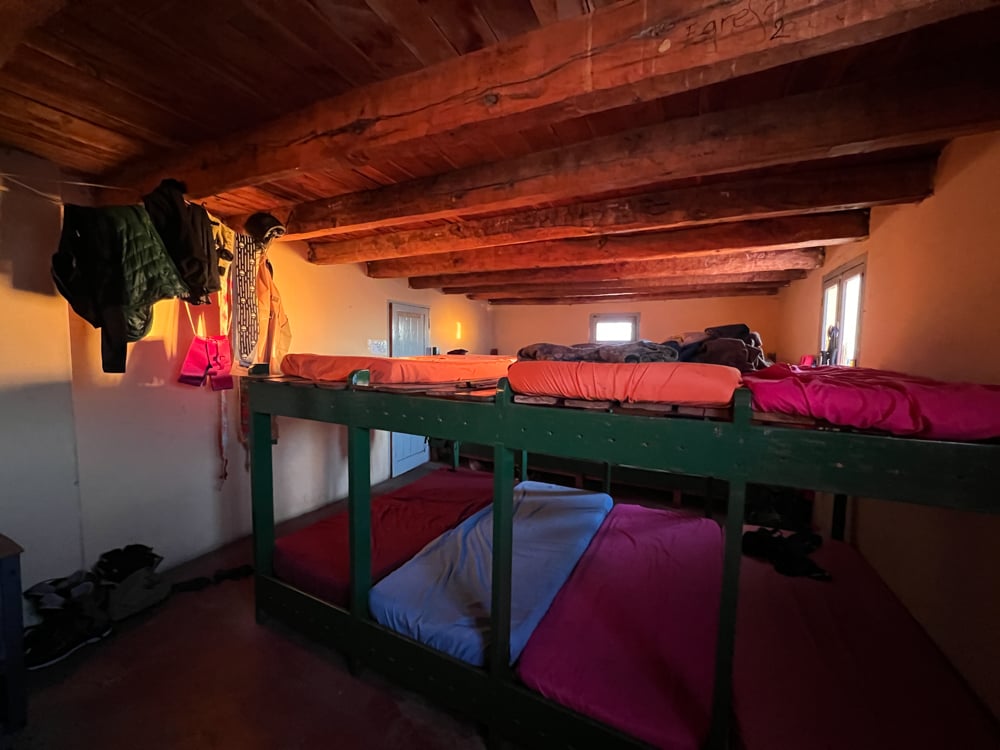
When and How to Start Planning Your Hut Trip
Deciding what hut to book can be an overwhelming process with a variety of considerations. Huts book up fast these days—meaning that you should be booking most huts by early fall if you want to pin down a trip for that winter. Cancellations do come up due to weather and changes in travel plans, but if you want to lock something in, it’s a good idea to start planning your trip in September.
Hut Tripper is an excellent resource for finding backcountry huts in the western United States and Canada. On the site, you can find a map of backcountry huts with booking information, approximate travel distances, and hut amenities. I use this site to explore and compare huts in the region I’m interested in traveling to—here’s an example for Commissary Ridge Yurt, which I went to in January 2024. Browse the site with the below considerations in mind to find your ideal hut trip destination.
How to Pick a Backcountry Hut
Deciding where to go on a hut trip depends on your aspirations and logistical considerations. Are you hoping to travel with a group of eight friends or just one partner? Often, you must book an entire hut—which is significantly cheaper if you can fill it with friends. For example, Wyoming’s Teton Backcountry Guides yurt network allows you to rent entire huts, while Ostrander Ski Hut and Pear Lake Winter Hut in California’s Sierra Nevada only permits booking individual beds, making it difficult to reserve enough beds for a large group.
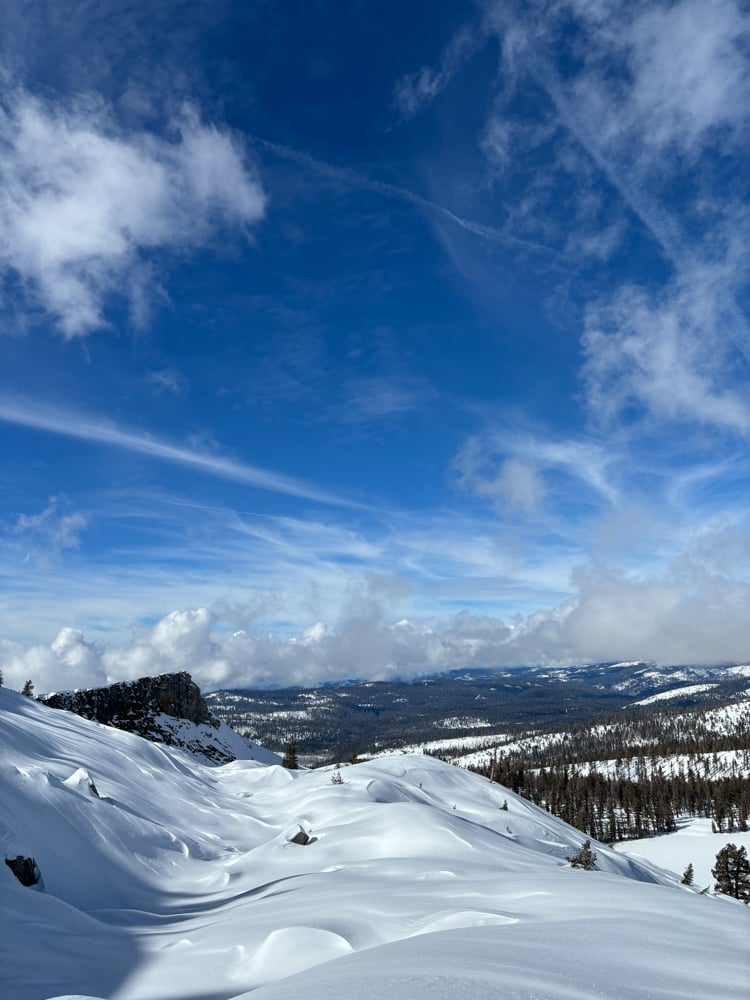
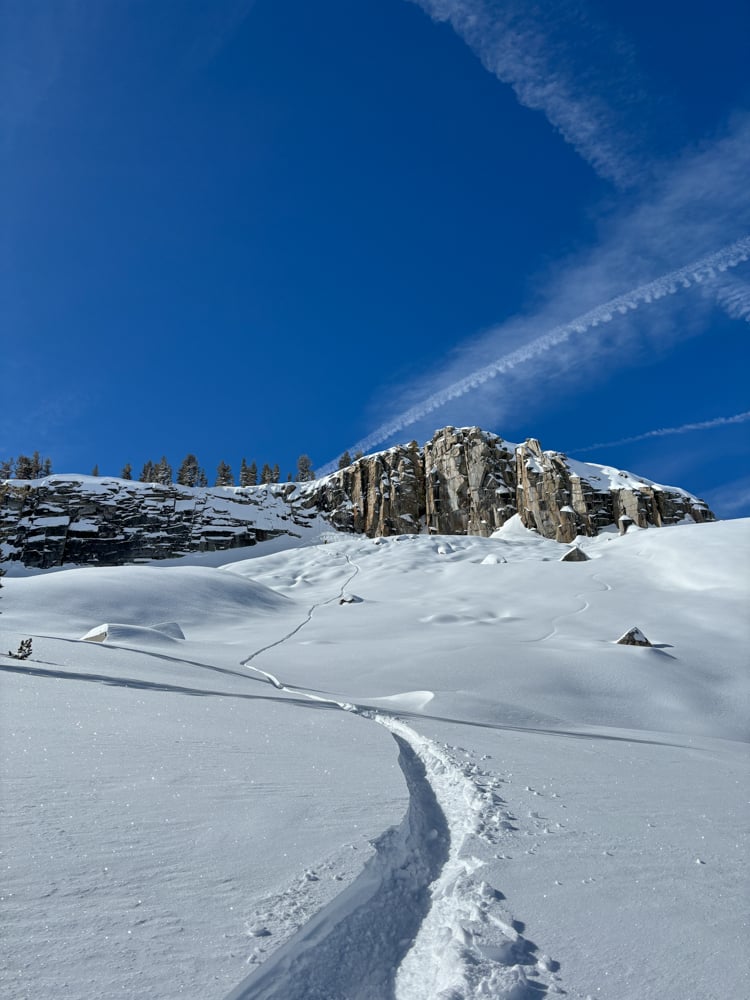
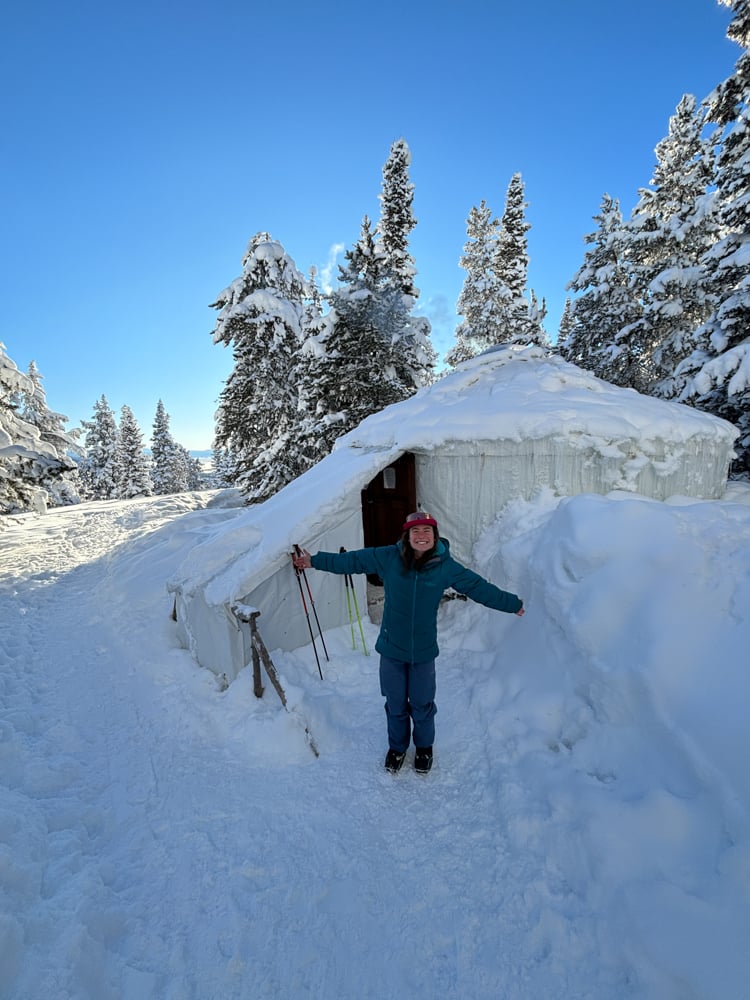
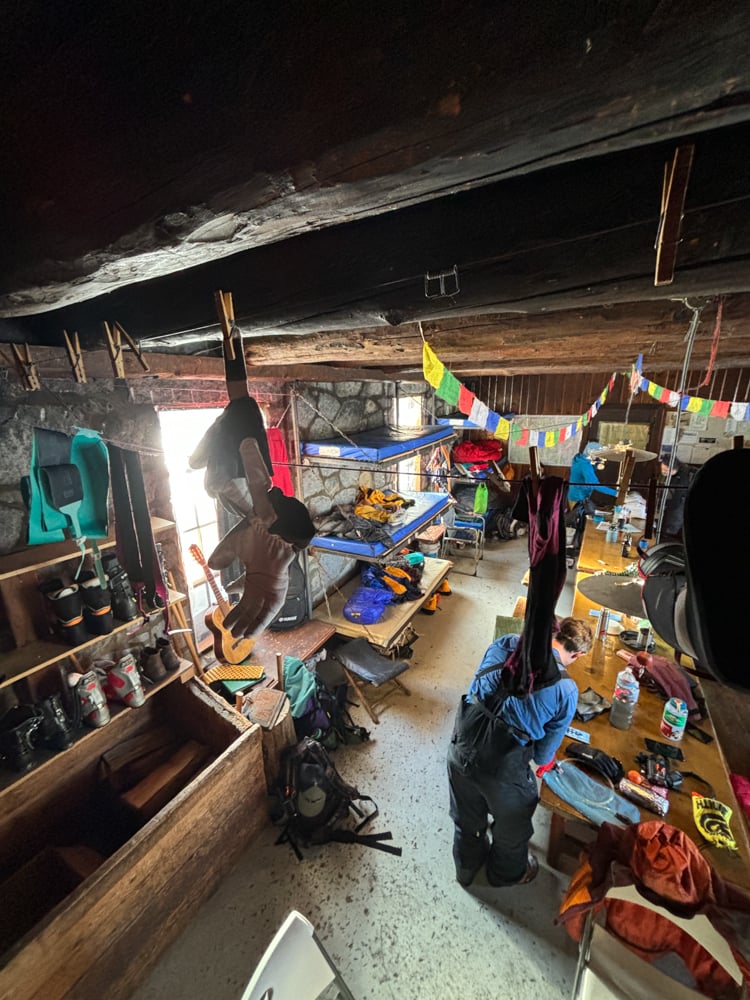
Next, consider how far you are willing to walk/climb. While some yurts and huts can be accessed a mere three miles from the car, others, like Ostrander Ski Hut, involve a ten-mile skin just to get there. Remember that your pack will be heavy—especially if you’re out for more than one night. If you only have a few days at a hut and want to spend more time skiing than walking, I would advise selecting a hut you can easily get to in a few hours. It’s also worth remembering that a ten-mile skin with 1,000 feet of elevation gain could be similar in difficulty to a three-mile skin with 3,000 feet of vertical gain.
I can’t emphasize this consideration enough—terrain, terrain, terrain. Check CalTopo, Gaia GPS, or OnX Backcountry to visualize the terrain surrounding your hut of choice—and be sure to turn on slope angle shading, which is available in each of these applications. If you’re planning a mid-winter trip, especially in an intermountain or continental snowpack, don’t count on being able to ski avalanche terrain. Look at maps to see if there are options for low-angle turns if avalanche risk is high during your trip. Be sure to map your entrance and exit using an online mapping service to plan a low-hazard route in and out. To get to some huts, you must cross avalanche terrain, which is not always a reasonable choice with a hazardous snowpack—keep this in mind while mapping your trip.
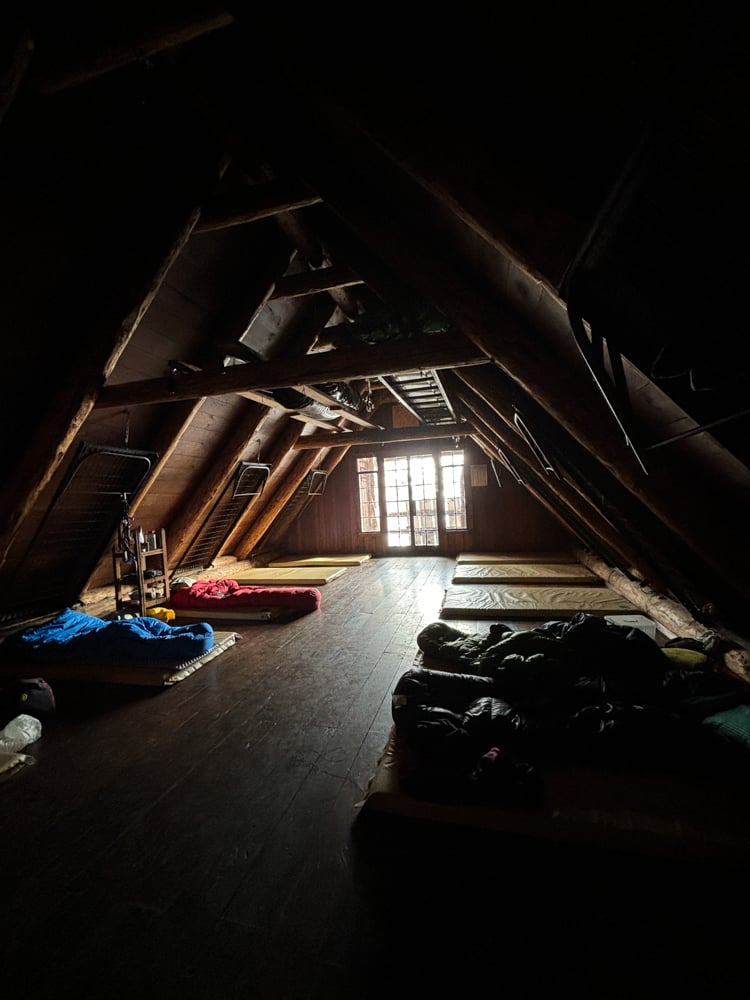
Some hut and yurt operators offer guided trips, while others offer only self-supported trips. Decide which choice makes the most sense for your circumstances, backcountry riding knowledge, and financial limitations. A guide can offer insight into the snowpack (especially in remote huts with no cellular service or avalanche forecast) and bring you to the best terrain for the snow conditions.
When to Go on a Hut Trip
When to go hinges on your aspirations and the terrain surrounding the hut you’re visiting. If you’re frothing over a winter powder skiing trip, it’s a good bet to plan your trip in the January to March window. If you’re hoping to ride more aggressive terrain in spring corn, April or May is often a safer choice. Keep in mind that every winter season is different, and you might be riding breakable crust in February or encounter a wet slab avalanche cycle in May. This goes back to options—selecting a hut with a variety of terrain options ensures that you will be able to ride regardless of conditions. I prefer mid-winter hut trips because I like to go ski camping when the temperatures warm up, but many folks prefer the better snowpack stability of a spring hut trip.
It’s also worth noting that locking in a weekend reservation for a hut trip can be difficult. If you want to go on a longer trip, weekday reservations can be easier to secure—and some hut operators offer mid-week discounts, which can decrease the cost of your trip.
Understanding the Snowpack for your Hut Trip
Especially if you choose not to go with a guide, keep yourself updated on the snowpack history in the zone you are traveling to throughout the season by checking the website of the area’s local avalanche center. Reading the forecast and snowpack observations can help you understand coverage and the potential avalanche problems. I like to check observations weekly starting at the beginning of the season, and daily as I get closer to my trip departure. Because most huts lack cellular service, you will likely need to do a little bit of your own forecasting if on an extended trip—and recording pertinent avalanche information while you’re in service is key to doing this well.
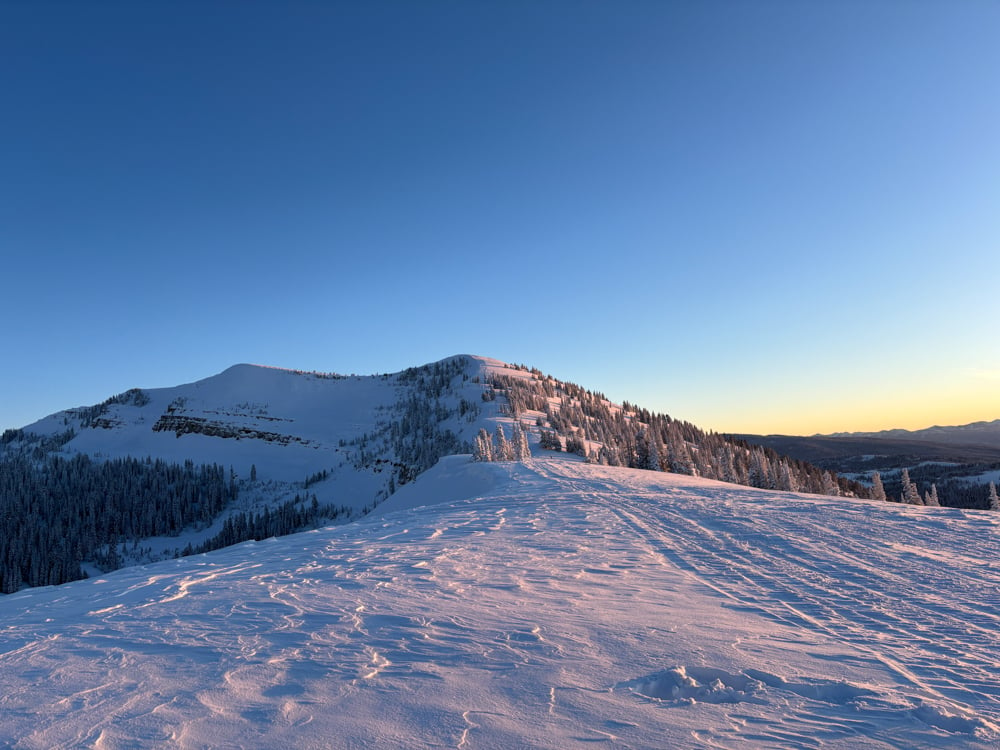
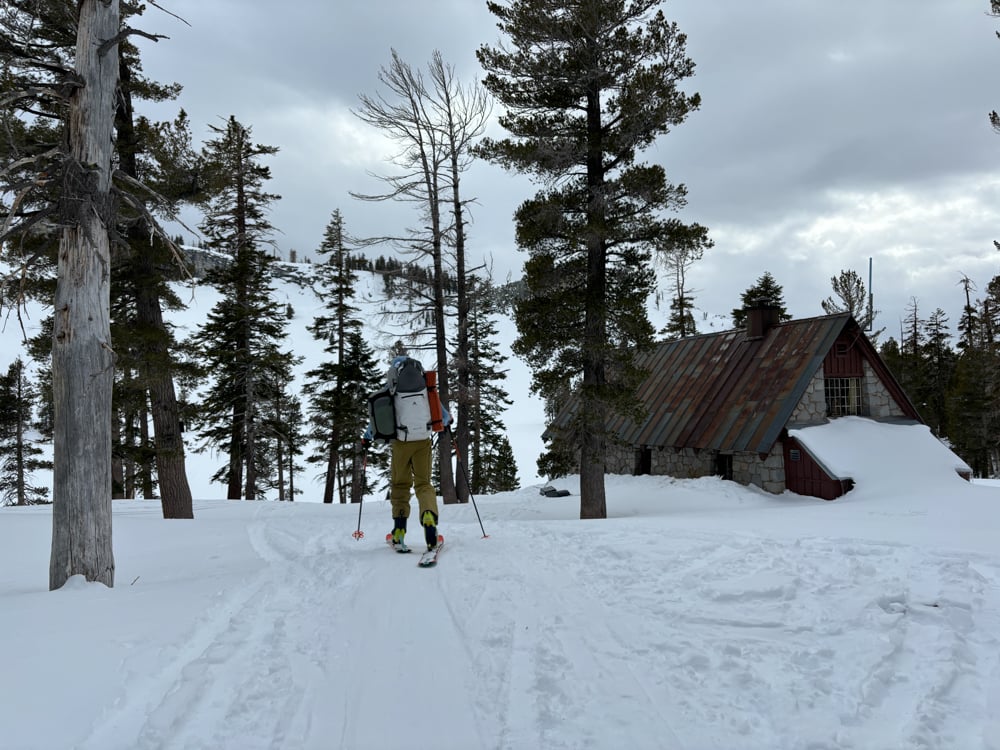
It’s also essential to start watching the weather within ten days of your trip to get a sense of temperatures and snow conditions. For United States huts, I use a point forecast from the National Weather Service by clicking on a hut’s location on the map for the most accurate forecast. Remember that forecasting accuracy is low until three days before the date you’re looking at, so avoid reading too deeply into long-range forecasts. Knowing what is going on with the weather can help you prepare better for your trip—and can help you decide which pair of skis or splitboard to bring for the conditions.
Packing for a Hut Trip
Browse your hut operator’s website to find out what gear and amenities are provided at the hut you are visiting. Some huts supply a stove, full cookware, utensils, toilet paper, and the like–-but that’s not the case everywhere. Check the packing list provided by your hut operator if it offers one, and take its recommendations seriously. You don’t want to be caught without toilet paper for a week-long trip in the mountains.
Sleeping Arrangments
A key packing consideration is your sleeping bag temperature rating. Usually, a hut operator will recommend a minimum temperature rating, but if they don’t, I recommend bringing a warmer bag than you think is necessary. Most huts have some type of heating system, but the overnight temperature in your hut can vary drastically. I run cold and often bring a -10F bag, but my partner usually brings a 20F bag without trouble. Once again—check the overnight temperatures and your provider’s recommendations.
Food
Food is a critical component of any backcountry trip. If a hut doesn’t provide full cooking amenities, I bring backpacking-style meals like mac ‘n’ cheese. If a full kitchen and propane stove is available, I’ll bring fancier food—including fresh vegetables. The food I bring also varies depending on how light I want my pack to be; for a ten-mile skin in, I probably won’t be bringing avocados. Bring ample snacks and lunch options that can be made with and without access to a stove. I bring cheese and tortillas for lunch on nearly every hut trip since it can be enjoyed cold or as a quesadilla.
Gear
Deciding what backpack to bring can also be a challenge. I usually bring a pack in the forty to sixty-liter range, depending on the length of the trip and the amenities provided. It’s best to use one pack for your entrance/exit and day tours from the hut. If your typical ski touring pack is only thirty liters, it’s unlikely to be enough capacity for your trip, but a typical backpacking-style pack may lack the features of a good touring pack—like an avalanche gear pocket. Weigh your options carefully according to the type of trip you’re going on. I prefer a forty-liter pack whenever possible because it often offers enough capacity without being too cumbersome to ride with.
Of course, be sure to remember your avalanche gear, a beefy repair kit, a headlamp, and extra batteries. These are essential for any hut trip. I always bring extra socks, a cozy set of clothes for around the hut, and my biggest down jacket for added comfort. Pro tip: bring earplugs. There’s nothing worse than being kept awake late into the night as other folks in your hut creak around the floorboards on their way to the bathroom in the middle of the night.
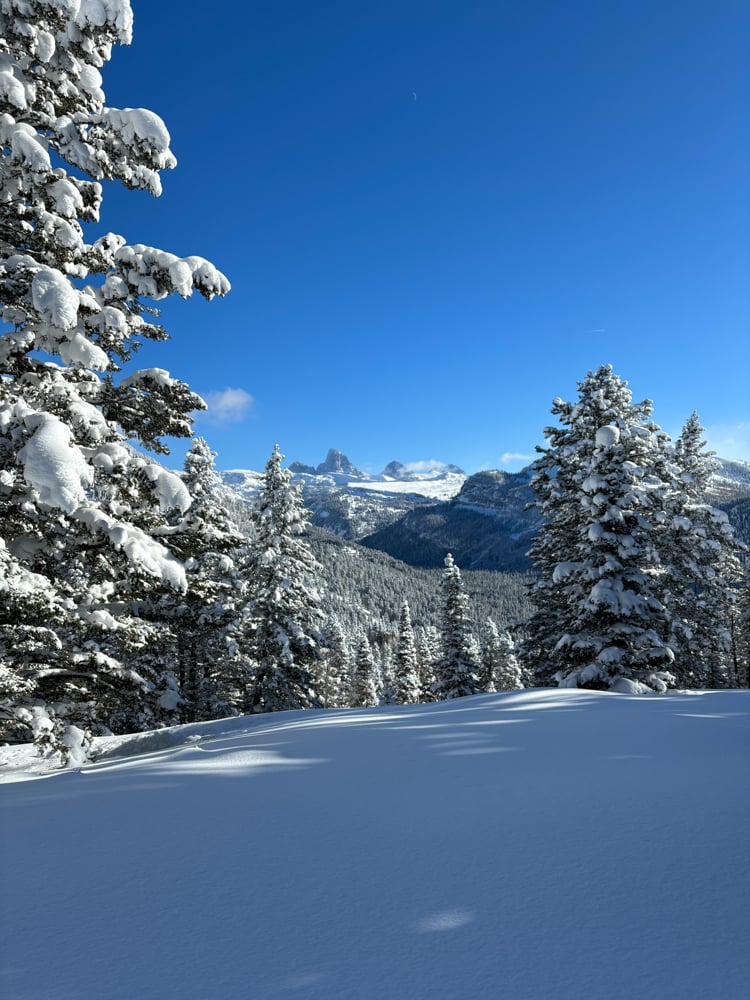
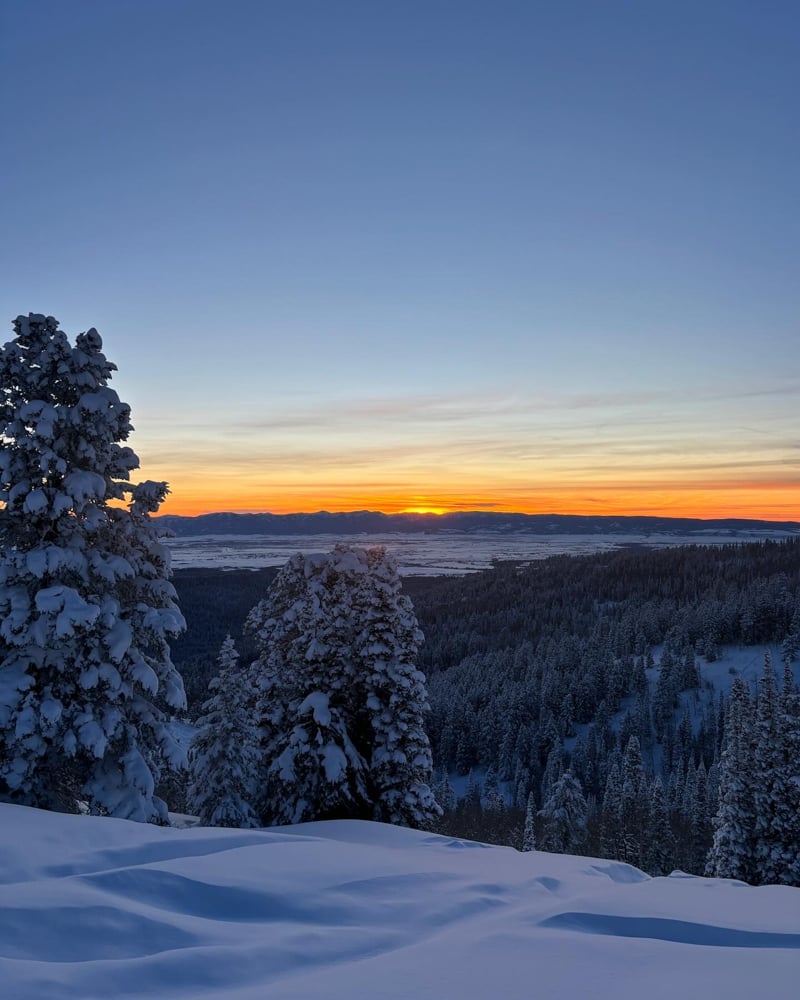
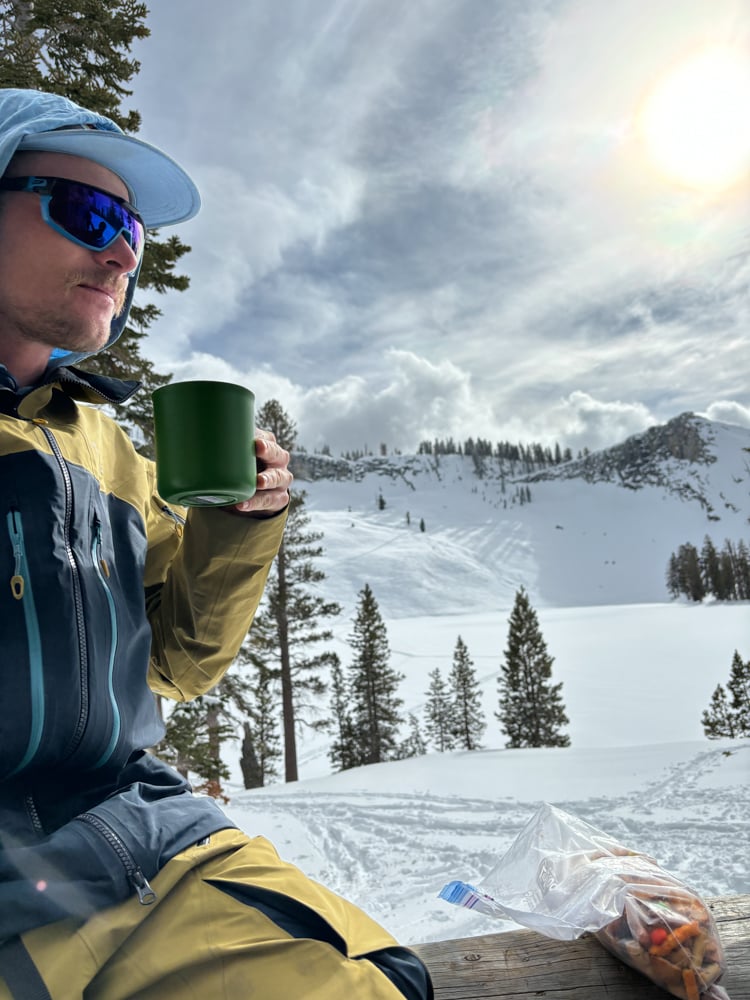
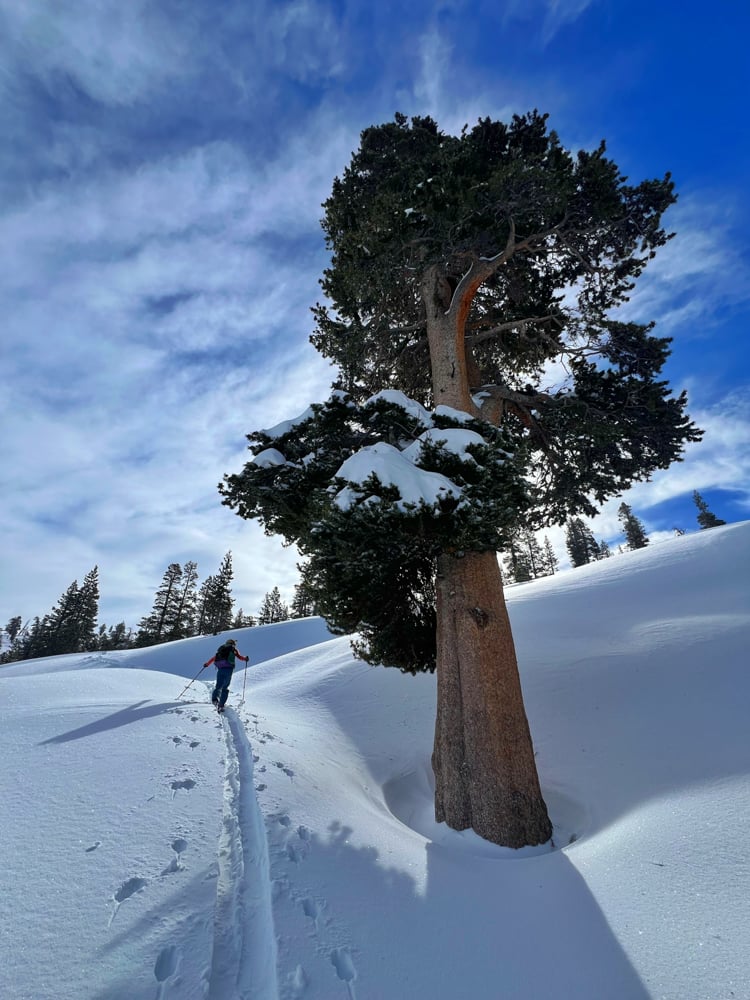
The Final Word
A backcountry hut trip can be overwhelming to plan–-but it’s well worth it. Sipping coffee, watching the snow fall, and riding powder with a few friends in a remote zone fills my cup each winter. Out in the mountains, waking up just a few hundred feet away from the slopes, you’ll be grateful that you put in the effort to plan a few days in the winter woods.
About the Gear Tester
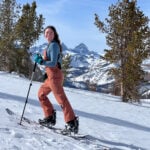
Jackie Florman
Jackie is a backpacking guide at Lasting Adventures Guide Service in Yosemite National Park, CA. She also works on a snow hydrology field research team, writes for HikingDaily.com, and is currently writing a thesis in Environmental Studies at the University of Colorado, Boulder. She loves splitboarding, scrambling, and rambling around in the Eastern Sierra and the Colorado Rockies. Follow her adventures on instagram @jackieeflor.

